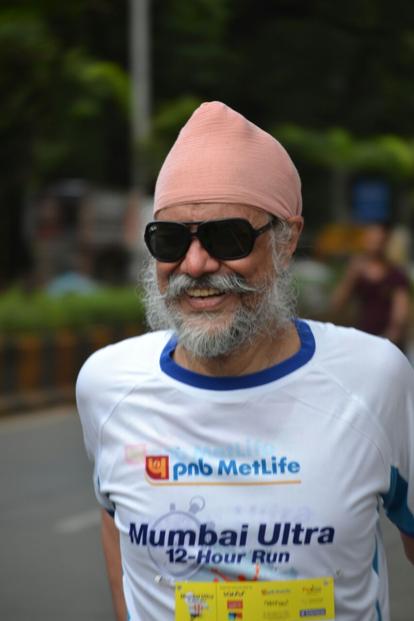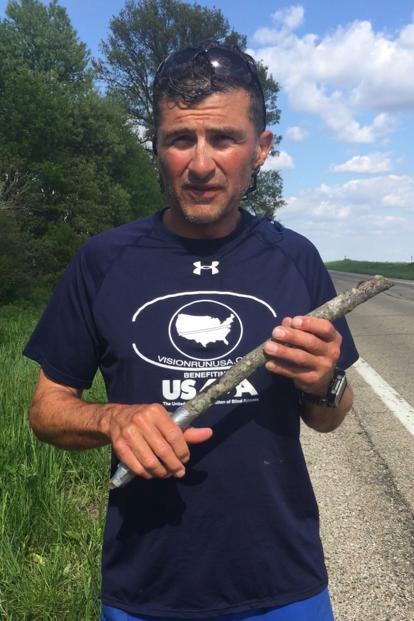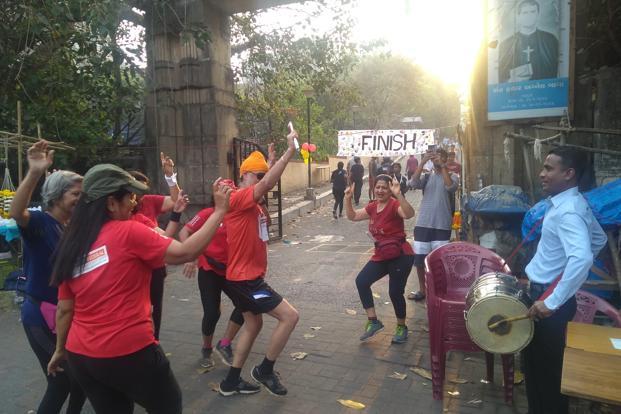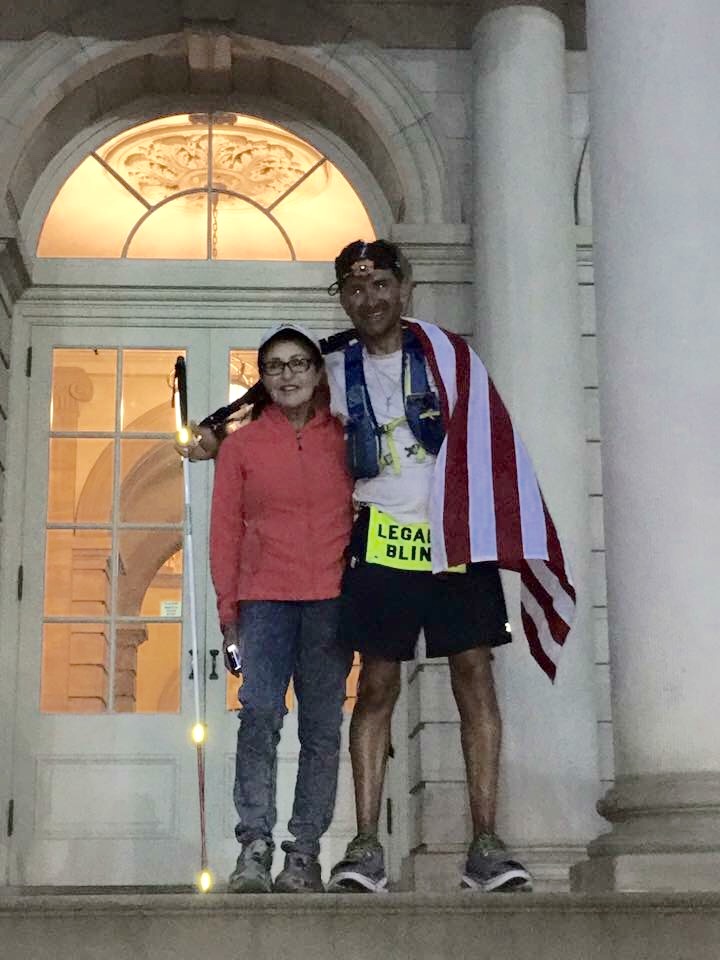
First published: https://www.livemint.com/Sundayapp/Bu503hbslyqNhZj9usvkXI/Running-blind-but-with-a-goal-in-sight.html
Running blind but with a goal in sight
Sightless runners Jason Romero and Amarjeet Chawla find a distraction, happiness and accomplishment in running that helps overcomes their sense of loss
Jason Romero and Amarjeet Singh Chawla have never met.
Romero, 48, grew up in Colorado in the US, while Chawla, 62, spent his early years in New Delhi, before moving to Mumbai. For each of them, around the time they entered their teens, they were diagnosed with severe ocular problems. While Romero was found to have retinitis pigmentosa, Chawla’s condition is called macular degeneration. In the years to come, Chawla would eventually become completely blind, and much the same fate awaits Romero.
The two men have one other thing in common: they love to run.
***
There was nothing Chawla enjoyed more at school than playing kabaddi. It didn’t matter then if he got yelled at for returning home with bruised knees and caked in mud, as long as there was a medal to show for his efforts. Academics didn’t suffer either—he featured among the top-five students in his class.
But as his eyesight weakened, he gradually started keeping to himself. After matriculation, he could not attend school as he could hardly see the board in class.
“My family was devastated when doctors told them that all they could do was delay the process. Us time se, maine sab ‘pathy’ try kar li (from that time on, I tried every treatment there is)—allopathy, naturopathy, homeopathy, ayurveda and unani. But it just wasn’t to be. By the time I was 40, I was completely blind,” Chawla recalls.

As he spent more time indoors, he slowly sank into depression. It took a massive effort for him to realize that he had to make the most of the time while he still had partial vision.
When he heard of a rehabilitation programme conducted by the National Association for the Blind, he made the daily train ride from Kandivali to Mahalaxmi to gear up for the other life. From mobility to learning how to make bouquets and fixing bicycles, the next four months helped him get his mental health back on track.
“My father was a financier, so even though I picked up the skills, I never thought of working a job. So I started with some money-lending work, before moving on to the business of lotteries,” he says.
Alongside setting up a lottery stall in Malad, Chawla found love in his sister’s friend, Gurpreet, and they soon got married.
His life changed further when he received a text message at the age of 48—blind runners were being invited to run the Mumbai Marathon, and curiosity got the better of Chawla.
“Apne ko kuch pata nahi tha (I didn’t know anything about it). So I went to check what a marathon was, they told me it involved long distance running,” Chawla says.
What followed was his first run in 2004—a sweet 7km, by the end of which Chawla was left mesmerized. The following year, he ran his first half-marathon (21km).
***
It was a similar first diagnosis for Romero when he managed to spot only five of the 10 lines he was to read during a routine optometric test at school.
“You can’t see,” the nurse told him. After visiting a specialist, it was confirmed that he was going blind. The doctor asked him what he wanted to do with his life.
Romero writes in his book, Running Into the Dark, published by I’m Possible Books in 2017: “I told him confidently, ‘I am going to be a doctor or a lawyer’.
“In response to my statement, he said, ‘Forget about that. You will be blind with no light perception by the time you’re 30. Most blind people don’t work.’”
In that moment, Romero was left demoralized, but he tried to lead life as normally as possible. With the aid of a number of lamps, a magnifying glass and reading glasses, he got through books with oversized text. It was all manageable in the day, but as darkness took over, he was left completely blind.

Time and again he was reminded about his condition, such as a nighttime football game at college, when he ran off in a direction opposite to where the ball had landed.
Along the way, he found inspiration in a distant relative, whom he calls Uncle Ted, a distance runner who Romero first saw running around a race track. Romero ran a few laps with him, and was left amazed at his perseverance, despite swollen feet and fatigue.
He earned a business degree with honours, but it wasn’t until he went to law school, way past his teens, that he ran his first competitive race at the Denver International Marathon.
Until then he was a recreational runner, and with the training in place, Romero managed a promising timing of 3 hours 14 minutes and 42 seconds. However, he would run his next race only 14 years later.
In between, Romero pursued a successful private practice as an attorney, followed by a stint with General Electric. Marriage, children, promotions and a divorce followed, but what remained consistent was his deteriorating eyesight.
When he resumed running in 2010, Romero decided to do his first 100-miler—the Leadville Trail 100. Though he was unsuccessful in that first attempt, he came back again to finish the race thrice—the first blind person to do so.
***
By the time Chawla took on running, he had completely lost his eyesight. In some ways, his condition today is a precursor to the situation Romero is likely to face in the years to come.
“Legal blindness is an area where more education is necessary. It means that a person still has light perception, but lacks functional sight. Today, I have a 15 degree tunnel vision that I see through, and have night blindness,” Romero says over email.
Despite knowing his state and what he was going through, Romero often pretended that there was nothing wrong. All that changed when he narrowly missed running over someone while driving.
“When I stopped driving at 44, I knew that I could no longer fake being sighted. My world turned inside out at that time,” he says.
While the children were away at their mother’s, Romero thought himself into depression. After a trip to the psychologist, he picked exercise as a substitute for pills, running short distances at first and gradually logging the miles.
The day runs were manageable, but in poor light, he either had to tail another runner, following in his footsteps while aided by a powerful headlamp, or simply track the white lane markings on the road. With a healthy practice of running in America and awareness about blind runners, some help was always on hand as friends stepped up to guide him during races.
It wasn’t as easy for Chawla. For starters, a blind man running a race is still a cause for fascination, as fellow runners would line-up to show their admiration and take photos. But when it came to the actual role of guiding, it was always difficult to find an escort.
One of his first guides was a boy called Anil Solanki, who worked at Chawla’s lottery stall, and was oblivious to the world of running.
“Maine usko khilaya, pilaya aur taiyar kiya (I groomed him for running). He was aware of my running style, so we made a good team. But he soon started ditching me, so I struggled,” he says.
Over time, Chawla became regular on the running circuit and finding escorts became relatively easier. Their “tuning” was the key, as the escort had to hold one end of a cane and guide him through every bump and obstacle on the course, while also matching his pace. Yet, there were days when he would be up at the odd hour, bathed and readied for the race, only to realize that the escort had left him high and dry.

For training, Chawla soon made peace with holding the iron railing of the stairs at home and spot jogging, in addition to practicing pranayam to control his breathing over long distances.
***
Long-distance running gives one ample time to ponder, plot and evolve. The scientific explanations and documentation of what distance running does for the human body are aplenty. But anyone who’s taken on their own “long distance” would agree that the origins of a crazy idea too stem from a run.
During his 25th half-marathon, Chawla realized that time was passing by and he wasn’t running as much as he would like to. By the end of that run, he had set himself the target of running 101 half-marathons.
“My age and mileage have both increased since that day,” Chawla says, smiling.
Till date, he has notched up 85 half-marathons, the last of which was in Bathinda in February. Not much has changed since those days of kabaddi at school, as he gets yelled at even today—by his wife—each time he comes home with bruised knees.
“I’ve crashed into overenthusiastic volunteers and selfie seekers, missed the levelling on the road and even hurt my tailbone while sliding down stairs. But I’ve still not had my worst injury, because that would simply mean I have to stop running,” he says, laughing.
A similar epiphany struck Romero after a routine training run in November 2014. During those days, he was volunteering in Denver at a shelter for the homeless, who would be fed and bathed at no cost. On just another Thursday, as he went about his chores, his mind suddenly went blank.
He writes: “Within seconds, I felt something that I cannot decide. It was like being hit by a big wave in the ocean. When that wave hit me and submerged me, time stood still. When I emerged to the surface after the wave passed over me I could only think of one thing: I AM GOING TO RUN ACROSS AMERICA.”
Romero first conveyed his thoughts to his mother, Cindy, and when he received a message that read, “I’m in”, he knew the run was on.
***
The run across America is a distance of over 3,000 miles (4,800km), depending on the route one chooses. According to Usacrossers.com, there have been 283 crossings so far by 252 individuals—the fastest being Frank Giannino Jr’s 1980 trip of 46 days, 8 hours and 36 minutes (according to the Guinness World Records).

After his research, Romero narrowed down on running 50 miles (80km) each day for the next two months, which would get him to his target, starting on 25 March 2016.
By then, he had a healthy distance-running resume. To build on his muscle memory, he took on a 183 mile (293km) race in Puerto Rico, three 100-milers and the gruelling 135 mile (216km) Badwater Ultra in the scorching heat of Death Valley.
Though he failed to complete the 153 mile (245km) Spartathlon in September 2015, by the time December arrived, he had logged a 183 mile week—essentially, a marathon each day—which progressed to 293 miles (469km) by the end of February.
With his mother as the only crew member and at an estimated budget of $30,300 that he had raised from various sources and personal savings, Romero set out on Vision Run USA from the City Hall in Los Angeles. There were hazards aplenty, from oncoming cars, to brutal weather conditions and dealing with chasing dogs and mischief makers.
“In Indiana, a police officer drove at me in the breakdown lane and just about took my life. But every other law enforcement person I encountered was so helpful and empathetic to what I was doing,” he says.
At the same time, he would receive encouragement from mere strangers, who had followed his progress online and showed up out of the blue to accompany him on a certain leg. Every night would be spent recovering from the daily grind, while getting ready for the next day.
The biggest challenge was to meet the daily target of 50 miles before the sun had set and he was rendered completely blind. The one respite came in the form of food, the physical effort allowing him the luxury of eating absolutely anything.
“I love food—hot dogs, hamburgers, donuts, candy, fruits, veggies… I’ll eat anything,” he says.
He often considered a day’s rest, but it would only set him back on his target of 60 days, which meant staying away from his children for a longer time. So, as a new day dawned, he would force his swollen, blistered feet into the shoes and hit the road like a man possessed. By the time he was closing in on his destination—City Hall in New York—Romero was a spent force, having dealt with multiple injuries with the miles.
“With three days to go, I didn’t think I was going to make it. My mom and I were depleted—there was nothing left,” he says.
On 23 May 2016, Romero ran 70 miles (112km) that ended with weaving in and out of the cacophonous traffic of New York City. It delayed his progress and he was once again trying to beat the darkness. By the time he arrived at his destination, his world was pitch dark, as he hugged his mother and finally stopped running.
“At the end of the journey, I had to accept that I will never be able to outrun the darkness—I will always need to run directly into it. However, I also discovered that true love will always overcome any and all darkness,” he writes.
***
Romero became the first blind runner to run across America—3,063 miles in 59.45 days, averaging 51.5 miles each day. It was also the seventh fastest crossing of America, and one of 13 world records in ultra-running for visually impaired and blind runners that he holds today.
Since then, he has resumed running ultras and managed to complete the Spartathlon on his third attempt, even as he gears up for the day he will lose sight completely.
“The preparation for going blind is actually the grieving process. I find myself in different stages at different times—denial, anger, depression, bargaining and acceptance. It is ongoing for me and I have yet to fully accept going blind. I think only once I have no sight, will I be able to take this final step,” he says.
Chawla knows a thing or two about it. “You can never prepare for it. It’s just a natural process that you have to deal with once you get there. It’s not much different from a normal person, just that we need to put in more effort,” he says.
In the future, Chawla wants to chase longer distances and run around the world, setting benchmarks for other runners like him before he hangs up his boots, provided he can find sponsors and supporters who believe in his vision. These days though, he is taking time off the running as the country sizzles in the summer heat, but has his eyes firmly fixed on the 101st run, which will culminate at the Mumbai Marathon in January 2019.
“In my 13-year running career so far, my escorts have changed 47 times. But it’s heartening to know that for my 101st half marathon, I already have a line-up of 12 runners,” he says with a smile.